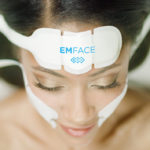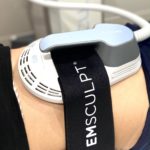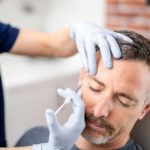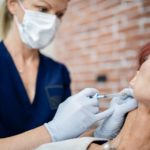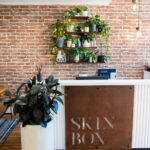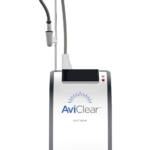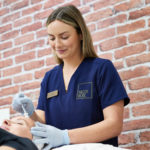THE REPRODUCTIVE YEARS
This week (2nd-6th Sept) is all about celebrating and supporting the health of women, girls and gender diverse Australians. I thought it would be timely to do a small blog series on the issues that most affect our female patients through their different life stages. By no means an exhaustive list, and leaving out the anxiety/depression and violence issues that are at the forefront of the disease burden for women in Australia right now, this series touches on the presentations we see in clinic during puberty, the reproductive years and then in mature adults.
Moving through our “Reproductive Years”
In the second part of this Women’s Health blog series, we have a whistle-stop tour of the issues that we see most often in our female patients during their 20s to 40s.
It is well known that after the age of 20 we get less effective at making new collagen and our production dwindles by about 1% less per year. Couple this intrinsic-ageing that is happening on the inside with the extrinsic/external ageing caused by the ravages of the environment in which we live, & we start to see visible signs of photo damage:
- loss of radiance
- fine lines
- patchy pigmentation
- tiny new visible blood vessels
- loss of elasticity/bounce in the skin
The skin is the largest organ of our body and is unique in that we can manipulate how it works by putting stuff directly onto it. The correct skincare should improve the health and function of your skin, as well as simply improving what it looks like.
We generally advise a basic starting routine consisting of vitamins A, B3 and C as active ingredients, with supplementary cosmeceutical goodies depending upon the individual skin. The most appropriate concentration/variant of these ingredients and the way in which they are delivered will vary from skin to skin and it is unlikely that your individual skin will respond in the exact same way to a certain routine as your friend’s did. There is only so much you can learn on TikTok; if you can’t seem to find products that work for you, its worth bearing in mind that Dermal Therapists/Clinicians have a 2 or 3 year degree specifically in this area and will be able to work out a personalised skincare routine for you. Often by your 30s you have amassed an entire bathroom cabinet of different skin products and are confused by which to use, how and when – this is where a Skincare Audit might be useful!
A woman’s skincare needs will often vary seasonally or with environment or hormone changes; we frequently see patients with an impaired barrier function (dry, red skin that is irritated and sensitive) from the lack of correct products. As it was during puberty, the most important skincare ingredient is still that SPF! By starting young, daily sun protection has often become a (fantastic) habit but we still come across women every day who only wear sunscreen on their face “when its hot” or if they are going to the beach. Slip-slap-slop, people.
Over and above the essentials, we can also use active skincare ingredients to encourage additional collagen production, rebalance the skin ecosystem, manage conditions such as rosacea and dermatitis, as well as hyperpigmentation.
Women in their reproductive years will often over-produce pigment in their facial skin when their oestrogen levels rise, which can occur for some women on the combined oral contraceptive pill or during pregnancy. This multi-factorial (ie its not just the oestrogen) condition is known as melasma and can be hugely frustrating and have an undeniable psychological impact. Treatment is usually very successful but it is a long process and requires life-long management. A colleague from India once said to me “melasma is like cockroaches – it will always come back”.
Talking of pregnancy, our skin becomes usually more sensitive during this time and skincare products may need to be adjusted. An extensive discussion on products and procedures that can safely be used during pregnancy and breastfeeding can be found here.
You may not be aware there are a couple of post-pregnancy issues that are rarely spoken about but which can often be successfully addressed using equipment available in aesthetic clinics: Post-partum vaginal atrophy and diastasis recti.

The drop in circulating oestrogen after pregnancy can cause a “drought in the lady garden” for some women, and tends to be worse in lactating mothers (because oestrogen levels are lower for longer). Thinning of the lining of the vaginal wall, decreased elasticity, and diminished vaginal blood flow all contribute to decreased vaginal lubrication, irritation, burning, itching, pain during/after sex, and urinary frequency. The symptoms are similar to that of a peri-menopausal vagina – something to look forward to for 50% of humans with a female reproductive system, yay! (more about that in the next section of this blog series). In addition to the hormonally-driven drying-up situation, the pain experienced in this area can be partially due to perineal trauma, lacerations, episiotomy, and forceps or vacuum use at delivery. Effective hormonal and non-hormonal options for treatment are available to get your vagina flourishing again.
Diastasis recti is the partial or complete separation of the rectus abdominis, or “six-pack” muscles, leaving a gap in the midline. Reviews of multiple clinical studies show that treatment with High Intensity Focused ElectroMagnetic devices leads to significant improvement without surgery, with the concurrent application of Radiofrequency giving the best results 2,3,4
During our 20-40s is also a time that many women experience acne, some for the first time. What the hell, right? Acne appearing in adult women is generally driven by an imbalance in the ratio of female to male hormones and can be frustrating and mentally demoralising. Many women will “have tried everything” and feel nothing is working by the time they arrive at our clinic. Management options need to be tailored to specific skins, lifestyles and budgets but adult acne is definitely controllable!
There is a role for skincare, hormonal balancing, and simple treatments such as LED, facials or chemical peels, right through to prescription medications and the Aviclear® laser that selectively targets sebaceous (oil) glands. Don’t put up with it & don’t give up.
It is often sometime during their 30s (but there is no rule about timing!) that women may first enquire about injectable treatments. With repetitive facial expressions over time, we start to see increased bulk and dominance of certain muscle groups; lines that were previously only “dynamic”, ie visible on movement, become “static” and visible at rest. The most common area for this is between the brows: many people frown when they are concentrating and they utilise a group of muscles for this that pull the eyebrows in and downwards. Over time, as this muscle group gets larger and stronger, a “resting bitch face” can occur, potentially giving a constant non-verbal message of anger, and vertical lines between the brows. Rebalancing the muscle action can soften the negative expressions and reposition the non-fixed variables of the face, such as the brows and mouth corners. Happily, society is moving away from a “frozen” look and it is perfectly possible with skilled injecting to maintain natural movement with appropriate muscle balance.
As our skin starts to visibly age, many women don’t realise that the other layers of their face are also ageing. The skull changes shape as we move through the decades, so that we lose bony support for our ligaments and fat pats, which also change in size and start to descend. This structural deeper ageing is reasonably predictable and can be tweaked with injectable products and skin devices to provide architectural support at vital points, improve tone and strength in the muscles that lift upwards, reduce fat in areas where volume is accumulating and provide volume replacement where it is being lost. Our aim at SkinBox with these sorts of treatments is always to celebrate the individuality of each patient; to work within the canvas that we have, to improve functionality and slow down the ageing cascade whilst helping our patients to achieve the very best version of their face.
Regenerative medicine is becoming much more on the radar for women as they begin to see visible changes of aging – there has been a definite increase in interest around treatments that are aimed at regenerating our own skin, with a view to staving off the decline in collagen and promoting longevity. This is where annual treatments such as resurfacing laser and cell-based therapies come in, as well as the latest addition to the Australian scene – an injectable made from salmon testes.
It’s worth mentioning that self-care often becomes less of a priority for women in this age group, and can even drop by the wayside entirely, as juggling the many facets of life, work, family and kids can be more than enough! It can be challenging to take the time to look after our physical and mental health when we are so busy; self-care can be seen as a guilty indulgence. Remember – self-care isn’t selfish – it is important for good mental health and wellbeing, which is why you never need to feel guilty about making it a priority xx
Stay tuned for the third part of this blog series, where we look at the perimenopausal years and beyond – the era of power and awesomeness!
Dr. Sarah Boxley – MBBS BSc(Hons) MSc FRACGP FSCCA FACAM FCPCA
